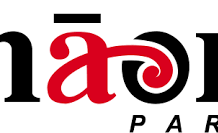Greenpeace says that the Climate Change Commission’s advice to the Government on the Emissions Trading Scheme (ETS) misses the mark because it continues to exempt New Zealand’s biggest climate polluter – agriculture.
Agriculture makes up half of New Zealand’s emissions, with intensive dairy the largest single emitter in the country – accounting for a quarter of all climate pollution.¹ While today’s proposals are silent on agricultural emissions, the Climate Change Commission notes the risks that not enough is being done to drive down emissions – threatening New Zealand’s comparative advantage and loading costs onto future generations.
“Disastrous storms, floods and heatwaves this week show we don’t have a moment to lose in cutting emissions from intensive dairy, New Zealand’s biggest climate polluter,”says Greenpeace lead agriculture campaigner Christine Rose.
“The Government must bring agriculture into the Emissions Trading Scheme and turn off the tap on the drivers of agricultural pollution – synthetic nitrogen fertiliser and too many cows.”
Though there is ‘backstop’ legislation in place while the Government considers agri-industry self-regulation through ‘He Waka Eke Noa’, according to Greenpeace Aotearoa it would take agriculture almost 100 years to be included at the same rate the public pays for emissions.
The Climate Change Commission finds the ETS will have a disproportionate impact on lower income households and those least able to adjust, and that domestic distributional impacts and other equity considerations need to be managed.
“To be an equitable and efficient system that addresses the climate crisis, the Emissions Trading Scheme must fully include industrial dairying now. While agriculture gets a free pass from the ETS, regular people across the country are having to pay the price and pick up the slack,” says Rose.
“The Government must address the causes of climate change, not just price them. That means phasing out synthetic nitrogen fertiliser and halving the dairy herd.”
Synthetic nitrogen fertiliser produces twice the emissions of pre-Covid domestic aviation, and by enabling dairy intensification it’s responsible for producing much more than that, including much of the most potent greenhouse gases, methane and nitrous oxide.
“Now is the time to usher in the regenerative farming revolution, which works with nature – not against it. A better farming future is possible but the need for action is urgent.”





